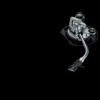
Why do I never see high efficiency subwoofers used for SPL purposes?
By
todd.brust, in SPL & SQ / Fabrication
-
Recently Browsing 0 members
No registered users viewing this page.
-
-
Recent Topics
-
- 2 comments
- 52 views
-
- 398 comments
- 33,056 views
-
- 18 comments
- 291 views
-
- 4 comments
- 119 views
-
- 2 comments
- 719 views
-
- 5 comments
- 1,555 views
-
-
-
Recent YouTube Posts


